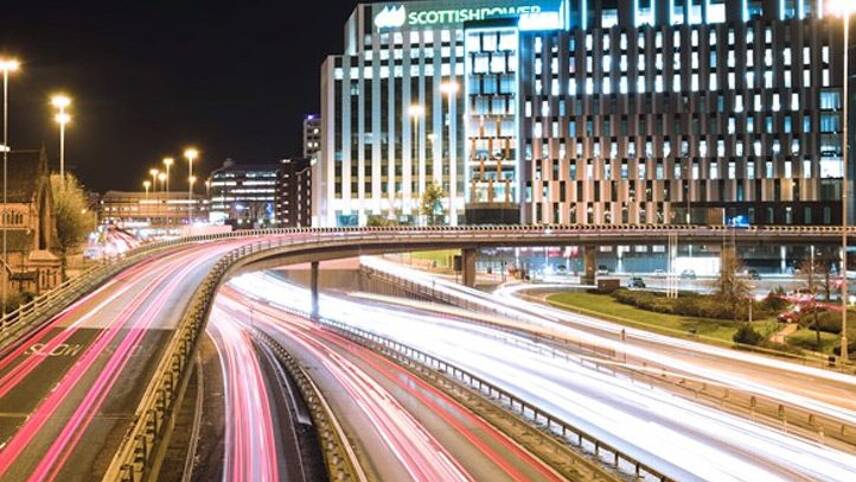Register for free and continue reading
Join our growing army of changemakers and get unlimited access to our premium content

Infrastructure and R&D around electricity
The routemap is modelled after Boris Johnson’s own Ten Point Plan, designed to align the UK’s economic recovery from Covid-19 with its long-term climate targets. The Plan outlined fresh funding and policy support for many of the technologies mentioned in the Conservative Party’s manifesto, including electric vehicles (EVs), hydrogen and carbon capture, utilisation and storage (CCUS).
While the plan was broadly welcomed, some have questioned whether it goes far enough to put the UK on a net-zero trajectory, given that the nation is not on track to meet future carbon budgets that were designed under the original Climate Change Act. Moreover, businesses are asking for clarity around how electricity, transport and heat networks will cope.
Energy Networks Association’s (ENA) ten-point plan outlines commitments to consolidate offshore connections, develop hybrid interconnectors and scale-up battery storage as more wind farms come online. The Ten Point Plan includes an ambition for the UK to host 40GW of offshore wind by 2030.
As well as storing excess power from offshore wind in batteries, the plan includes a commitment to help scale up the UK’s green hydrogen production capacity using this energy. It states that network operators are expecting a “hydrogen bonanza” in the coming years as existing projects scale up and major new net-zero industrial clusters come online. But hydrogen is not inherently “green” – more than 90% produced last year used fossil fuels. Moreover, R&D to determine its place in sectors like maritime, aviation and heat will need to be scaled up.
Aside from wind, the roadmap highlights the importance of nuclear energy. The ten-point plan includes a £525m package for the sector – some of which is expected to go to Rolls Royce, for its work to develop 16 mini modular reactors across the UK. But the UK Government has been accused of failing to support nuclear at an appropriate scale, and of failing to plan ahead for the impending ‘nuclear gap’. Six of the UK’s nuclear plants are planning to go offline by 2030 and progress on Hinkley Point in Somerset has been stalled once again due to Covid-19.
“Transmission network operators are building the connections for new nuclear projects whilst also making the most of existing infrastructure,” the roadmap states.
More broadly, the roadmap is underpinned by commitments to continued increases in R&D funding and accelerated efforts to conserve, create and restore natural habitats.
Spotlight on electric vehicles
EV’s have been a big policy focus since the 2019 General Election. The 2020 Budget saw Chancellor Rishi Sunak confirming £500m for fast charging networks and a further £532m to extend crants for electric cars, vans, taxis and motorcycles. And, after much pressure from green groups and businesses, the Government this year brought the UK’s ban on new petrol and diesel car sales forward to 2030.
The electrification of transport is, of course, expected to cause shrinking oil demand and higher electricity demand. National Grid estimates that if all cars were electric by 2050, but that smart charging and EV sharing scale-up, peak demand growth would be around 6GW.
ENA’s roadmap states that operators recognise the “key role they have to play in supporting innovation and infrastructure for a mass roll-out of EVs”. It commits members to accelerating “ground-breaking” work on smart charging and vehicle-to-grid (V2G) technology, and to prioritising electric public transport as well as individually owned vehicles.
Built environment focus
In related news, ten UK-based businesses have signed the World Green Building Council’s (WorldGBC) Net Zero Carbon Buildings Commitment this week.
The Commitment states that every building in the world must be transformed to align with net-zero by 2050 at the latest. It challenges signatories to achieve net-zero carbon in operation for all building areas under their direct control by 2030, and to advocate for all buildings to be net-zero carbon by 2050.
Crucially, WorldGBC provides advice on tacking embodied carbon as well as operational emissions, offering a roadmap for the entire life-cycle.
The new signatories are Arup, BAM Construct UK, Bioregional, NatWest Group, Savills UK, Stanhope, the Crown Estate, Wilmott Dixon, WSP UK and Troup Bywaters and Anders. Many already have their own net-zero targets which are more ambitious than the UK’s national deadline.
The commitment now covers 42 UK businesses, which collectively represent more than 4,700 buildings and 16.7 million square metres of floor space.
The growing number of UKGBC members signing up to the Commitment demonstrates a real push from our industry and shows that we stand ready to tackle the climate challenge ahead,” UKGBC’s chief executive Julie Hirigoyen said.
Sarah George


"But hydrogen is not inherently “green” – more than 90% produced last year used fossil fuels."
The nail on the head!! In the UK renewables are not sufficiently reliable to give us much energy. A dearth and then profusion is no answer in the energy field.
The only reliable answer lies with nuclear energy, fission now then, perhaps, fusion; the ultimate dream.
It might be noted that hydrogen is produced by electrolysis at about 80% efficiency, and used at about the same efficiency. So overall about 60%.
It is very attractive, but not without snags, nature seems to be like that!!!
Richard Phillips
PS Why so few comments, I seem be alone!!!!